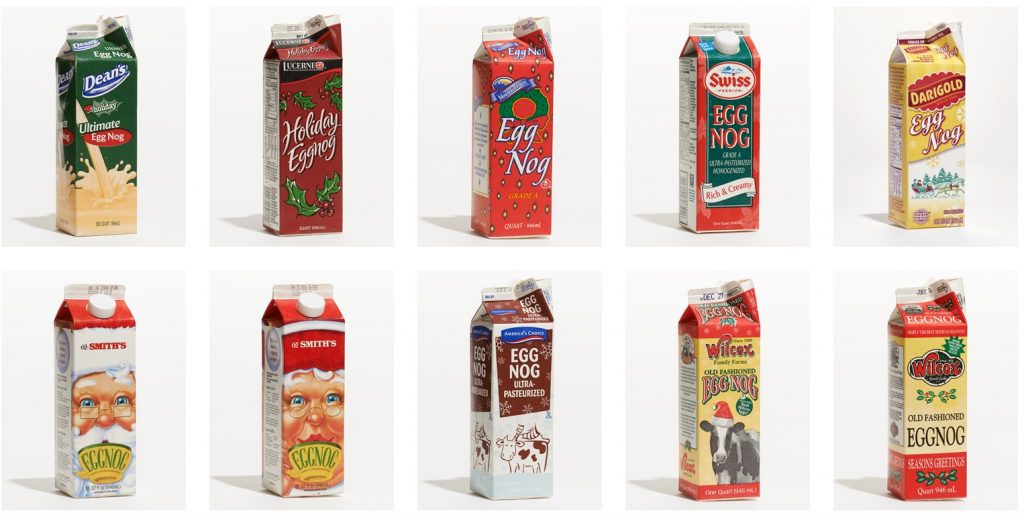


The eggnog carton has sprouted in grocery stores throughout North America since October and will quickly disappear by the end of the year. Esquire states that “there doesn’t seem to be a middle ground on eggnog. You either love it or hate it”. The consumption of eggnog is down 42 percent since 1969.
The eggnog project is the collection of Madeleine Eiche. Her fascination with eggnog carton designs began in 2002 when she was employed making eggnog lattes at a New York coffee shop. It was the Dairy Fresh packaging of Canastota—and Madeleine’s fond predisposition toward both dairy products and pop art—that inspired her ongoing amassing of eggnog cartons. The peculiarities of the packaging range from festive to banal, minimal to ornate, and many seem to be printed with complete disregard for color alignment. It is precisely these things that make for such compelling kitsch.
The origins of the name eggnog are in dispute, as some say that it comes from “noggin” which means wooden cup, or “grog” which was a strong beer. By the late 18th century, the name eggnog had stuck and it is in use to this day.
In the US, FDA regulations only require that 1.0 percent of a product’s final weight be made up of egg yolk solids for it to bear the eggnog name. Under current U.S. law, commercial products sold as eggnog are permitted to contain milk, sugar, modified milk ingredients, glucose-fructose, water, carrageenan, guar gum, natural and artificial flavorings, spices, monoglycerides, and colorings.
In Canada, the National Dairy Code defines eggnog as: “food made from milk and cream containing milk and cream which has been flavored and sweetened. The food shall contain not less than 3.25 percent milk fat and not less than 23 percent total solids.” In Canada, if a commercial product does not contain eggs, it cannot be called “eggnog”.
Journals and diaries from back then reveal that eggnog was a Christmas tradition. What is less clear is how drink and holiday met, hit it off, and stayed together. One can guess. The ingredients for eggnog are available year-round, but could you imagine drinking a cream-based brew with the viscosity of syrup and then heading out to plow a farm in summer? It makes much more sense that colonial Americans would’ve waited until winter, for an occasion worthy of breaking out the spirits (if scarce) — for Christmas, a time when the harvest was done and there wasn’t much to do but celebrate.
Discover more from Grubbits
Subscribe to get the latest posts sent to your email.
